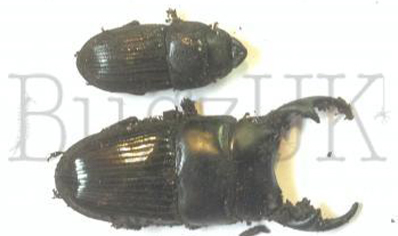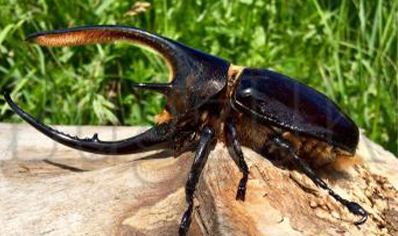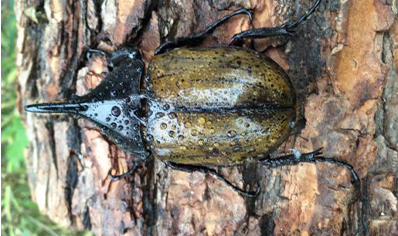- Kingdom: Information not available
- Phylum: Information not available
- Class: Information not available
- Order: Information not available
- Family: Information not available
- Genus: Information not available
- Species: Information not available
Beetles: Phalacrognathus Muelleri (must Be Ordered In Pairs)
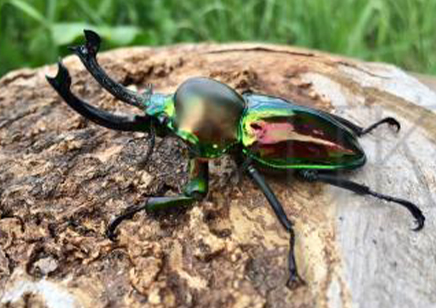
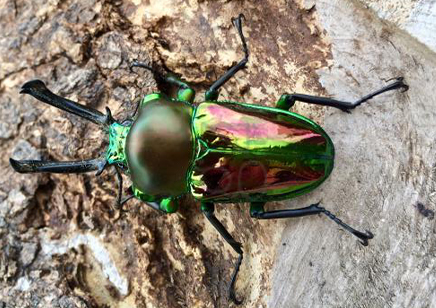
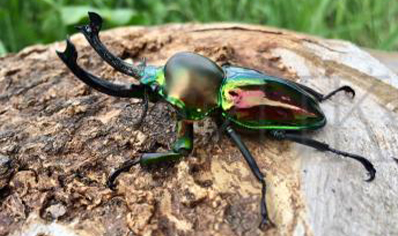
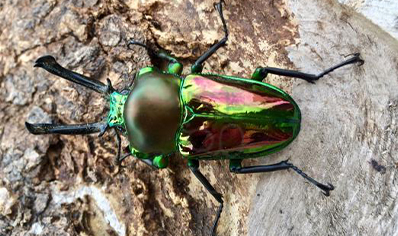
Order Now!
All payments are made through a secure payments system click here for more information.
caresheet by Joris Rockx...specialist breeder
Number one on the list of many beetle breeders for their gorgeous appearance, unique looking mandibles and relative ease in breeding are Rainbow Stag Beetles (Phalacrognathus muelleri). Originally from Australia this species was once considered rare before it was bred all over the globe. Nowadays you can get them in many colour forms ranging from the red and green ‘wild type’ to just red or green, and even blue!
These beetles come from the rainforests of Australia and therefor like it warm but will tolerate lower and higher temperatures. They will be happiest around ~24 C. Rainbow stags are nocturnal meaning that if the temperature allows it, they will become active as it gets darker. During the day they will most likely bury themselves in the substrate. You might see the males hang around the source of food awaiting a female.
Keep your beetles in a container that has enough substrate in it for them to bury themselves. You want limited ventilation so the enclosure does not dry out. The more ventilation you provide them, the more you will need to mist their enclosure to keep the humidity up. You can feed your beetles fresh fruit such as banana or mango but avoid citrus fruits. The most convenient beetle food is beetle jelly: it does not attract fruit flies and does not need replacing as often as fruit does (find it in the shop!). Avoid using real plants in your enclosures because the beetles will uproot them when they go digging through the substrate. You can add some colour with artificial plants! Make sure your beetles have something to grip onto on the surface of the enclosure because if they upend themselves they will get stuck on their back like a tortoise and will likely die from spending all their energy in a futile attempt to right themselves. So add some bark or twigs to the surface!
Breeding is fairly straightforward. You need an active male (usually larger mandibles but always smooth pronotum and elytra) and at least one or up to three active females (usually smaller mandibles but always have a ridge along the pronotum and textured elytra). These beetles are not immediately active following eclosion. They should be sexually mature a couple months after. While inactive they will not eat (don’t try to make them, their gut is not properly developed yet) and some legs will still be stiff. Leave your active beetles in an enclosure with a single food source where the male can wait for the female to come to him. Leave them for around a week to make sure they will have mated, which you will want to have observed for peace of mind! Nothing worse than waiting months for your female to lay eggs only to find nothing when you go to check months later!
Now that your beetles have mated, place them in a breeding box that ideally has flake soil with at least one piece of white rotten deciduous wood such as oak or beech that is relatively soft decayed and rehydrated but not sodden. Remove the bark so your female doesn’t waste time or energy getting into the log. Here and in the flake soil she will hopefully lay lots of eggs, in my experience around 40 depending on how big your box is and how long you leave your female in for. Now the waiting begins! You can check as early as a month later but this is not recommended; you’ll find mostly eggs and early L1 larvae which are all very delicate. Patience is a virtue! Try to give it at least 3 months before you go digging carefully through the substrate. If you do find eggs, carefully transfer them to a small plastic container with flake soil. Try to bury them close to the transparent edge of the container so you can monitor its progress. Eggs are extremely delicate so be careful!
Your larvae will go through 3 stages called instars: L1, L2, and L3. This can take from close to a year if it’s a female or small male, or even up to 18 months if it is a large male. Replace 2/3 of the substrate at least twice a year, or when you can see a significant amount of poop pellets. Leave some of the original substrate in the container so your larva’s digestive system isn’t too shocked from the change in food. Maintaining a constant temperature, ideally 24 degrees C, will be very beneficial to the size of the adult beetle. You can do this easily by making a makeshift incubator out of a Styrofoam box and a thermostat + heat mat. Leaving your larvae at room temperature is fine as well but the temperature fluctuations will mean you end up with smaller but still beautiful beetles.
Once your larva is ready to pupate they will turn slightly yellow and construct a pupal chamber in the substrate in which they will then pupate. This process takes roughly a month. Your beetle is best left undisturbed until they break out of their pupal chamber on their own. This can be weeks after they’ve finished their transformation so once again be patient! Congratulations, you made it! First generation completed, time to start all over again!
Best of luck,
Joris Rockx
Rockx – Novelties of Nature (find me on social media!)

